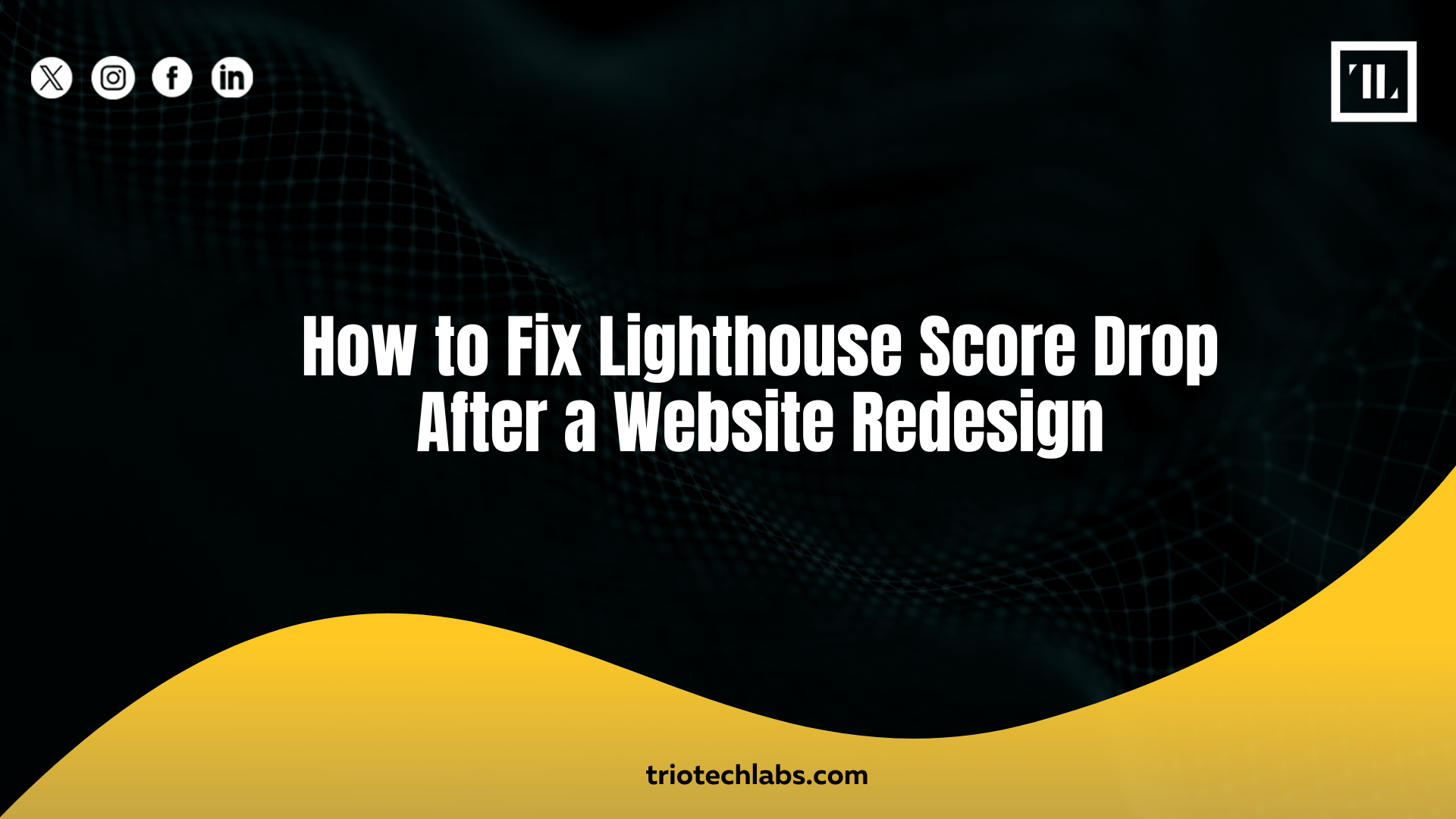
Just redesigned your website and noticed your Lighthouse score suddenly tanked? You’re not alone, and you’re not crazy!
Many business owners and developers face this exact frustration: everything looks better, but performance metrics say otherwise. That’s because redesigns often introduce heavier images, new fonts, unoptimized scripts, or layout shifts that silently hurt your page speed and SEO.
The good news is that these issues are fixable. By reviewing what changed and applying targeted optimizations, you can restore (or even improve) your Lighthouse score without undoing your new design.
Here’s how to fix what’s broken and why it happened in the first place.
What Happens Under the Hood During a Redesign
A redesign affects what users see. Also, it changes how browsers load and evaluate your site. Every visual enhancement or layout shift involves new assets, stylesheets, or JavaScript files. If these elements are not optimized, they add delays, block rendering, or introduce usability issues that Lighthouse flags immediately.
Performance, SEO, accessibility, and code quality are all measured in real-time. If your redesign didn’t account for those metrics, your scores will reflect that.
1. Reduce Page Weight to Improve Load Time
Modern redesigns tend to introduce high-resolution images, background videos, icon libraries, and font kits. While these elements create visual appeal, they also increase your page weight and slow down your initial load time which harms metrics like: Largest Contentful Paint (LCP) and First Contentful Paint (FCP).
A lighter page means faster performance, better user experience, and a higher Lighthouse score.
Checklist to Reduce Page Weight:
- Convert large images to WebP or AVIF formats
- Compress assets without losing quality
- Limit font weights and icon libraries to only what you use
- Defer loading of non-critical images and sections
2. Eliminate Render-Blocking Resources
Redesigns often bring new CSS frameworks or JavaScript features. But if your CSS is not inlined or your scripts are not deferred, browsers must fully process them before rendering the page. This creates a blocking effect that severely impacts your performance score.
Browsers work sequentially. If critical scripts and styles are blocking rendering, your LCP and Time to Interactive will degrade quickly.
Checklist to Prevent Render Blocking:
- Defer all non-essential JavaScript using the defer attribute
- Inline critical CSS and load the rest asynchronously
- Remove unused CSS and JavaScript with tools like PurgeCSS
- Minimize third-party scripts that add load time
3. Fix Accessibility Violations in the New UI
New designs often overlook accessibility requirements. Elements may look polished but still lack proper contrast, skip semantic structure, or have missing ARIA labels. Lighthouse evaluates all of these and penalizes issues harshly.
Accessibility isn’t just about compliance. It’s a core UX and SEO factor that affects engagement and discoverability.
Checklist to Improve Accessibility Score:
- Use semantic HTML tags for structure, not just divs
- Add descriptive alt text to all images
- Ensure text meets color contrast standards
- Label form elements clearly using label and aria-label
4. Recheck SEO Elements That Got Overwritten
When migrating to a new CMS or theme, SEO settings often get reset. Titles, meta descriptions, canonical tags, and schema markup are either lost or misconfigured. Even slight changes to your site hierarchy or internal linking can impact your visibility and crawlability.
If your SEO Lighthouse score dropped, start with these basics.
Checklist to Restore SEO Signals:
- Set descriptive meta titles and descriptions on every page
- Ensure canonical URLs are correctly defined
- Check for missing robots.txt or sitemap.xml files
- Add schema markup for important content types
5. Apply Smart Lazy Loading (Not Overloading)
Lazy loading is essential for performance, but misused in many redesigns. Lazy loading everything, including above-the-fold images or hero sections, delays visual content and damages LCP. On the flip side, not using it at all overloads the initial page load.
Use lazy loading tactically so users and Lighthouse get the best of both worlds.
Checklist for Smart Lazy Loading:
- Lazy load only below-the-fold images and iframes
- Preload above-the-fold images using link rel=”preload”
- Load fonts and key assets early to avoid layout shifts
- Avoid lazy loading your logo or hero banner
Conclusion
A drop in your Lighthouse score after a website redesign doesn’t always indicate a flawed design; it may just require technical fine-tuning. To improve performance, focus on optimizing images, managing JavaScript and CSS, and enhancing server response times. Remember, performance optimization is an ongoing process. With the right strategies, you can ensure your redesigned website looks great and functions well. Regular testing and improvements will positively impact your Lighthouse score.
Need to boost your site’s performance while maintaining its new look? TRIOTECH LABS specializes in post-launch optimization and performance recovery for redesigned websites.
